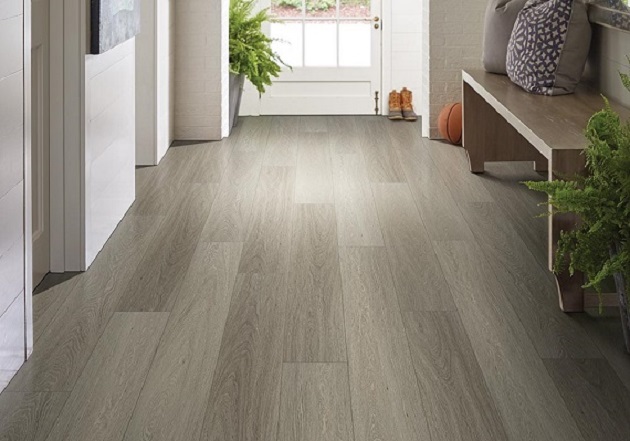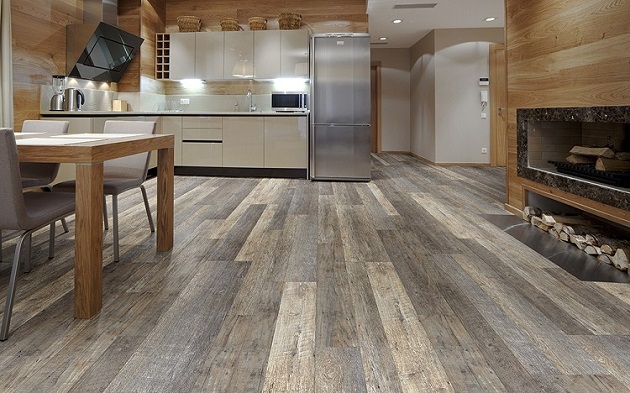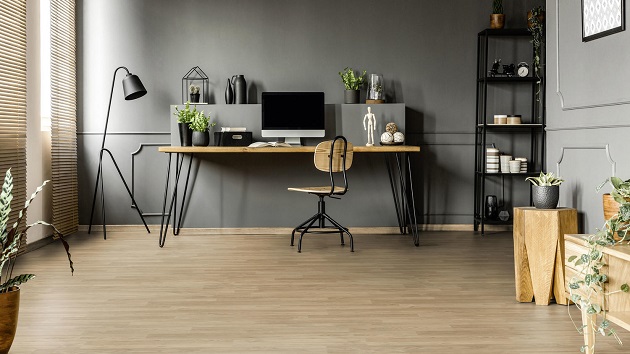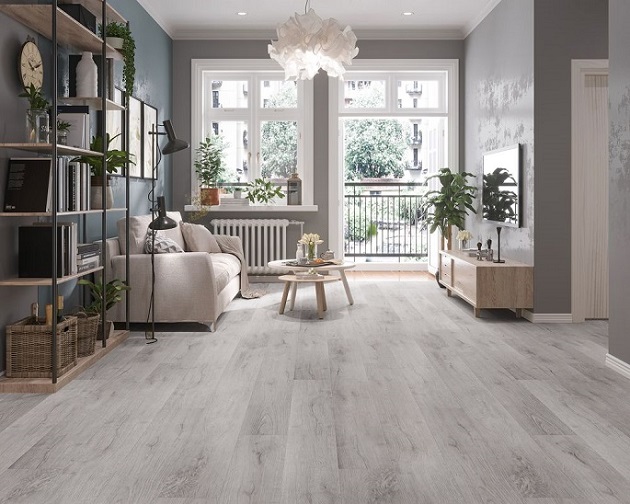Vinyl Flooring: Lay a Foundation That’s Sturdy and Stylish
With today’s constantly changing trends in interior design, it’s hard to find the right flooring, given the many different materials and styles available. Vinyl flooring is increasingly growing in popularity ever since it was first introduced in the past century. As technology advances, vinyl floors have gained many new features that contribute both to their functionality and appeal.
Advantages and Disadvantages of Vinyl Floors

Depending on the brand you choose, vinyl floors offer many advantages when applied to residential or commercial spaces.
- If you treat your vinyl floors well, they can be very durable;
- They’re scratch and dent resistant, unlike traditional hardwood, due to their strong protective layer;
- They’re easy to maintain and install;
- Most models are water-resistant, with some models being completely waterproof;
- They can successfully imitate any kind of flooring, from ceramic to hardwood, due to the latest 3D printing and embossing techniques, and do so for a fraction of the price.
The disadvantages of vinyl floors are the difficulty of repair and removal, and the damage they can suffer when overexposed to sunlight.
Can Vinyl Flooring Look Like Wood?
Vinyl floors can be very convincing hardwood floors. Chances are you could’ve been in a situation thinking you’re standing on a hardwood floor when, in fact, it was vinyl. They incorporate convincing styles and patterns found in natural wood and improve the design of your home and office spaces with their superb benefits.
The textures used in wooden vinyl flooring include hand-scraped, wire-brushed, micro bevelled edges, painted bevelled edges and more. They also mimic different types of wood, such as oak (one of the most popular wood looks), pine, hickory, walnut, acacia, maple, cherry, elm and many more. So, whichever wood look you have in mind – it can be found in vinyl.
Other alternatives for hardwood flooring aren’t as beneficial and convincing as vinyl floors, such as bamboo, cork, laminate, concrete and hemp wood. Laminate, along with vinyl, is one of the most durable flooring options, while hemp wood is a more sustainable flooring alternative.
Residential Use
The many qualities of vinyl flooring make it an ideal flooring option for your home. Having young children and pets around the house can be a big challenge for maintaining clean and healthy floors. Their clumsiness can often lead to accidents and sometimes low quality or slippery floors might be at fault. Vinyl floors offer scratch and slip resistance, and are easy to maintain.
Aside from safety and functionality, we naturally want our floors to be warm and welcoming, and contribute to the overall aesthetic of our home. This is where wood look floors come in.
To complement a classic or modern style of furniture, you can choose walnut, mahogany, elm or dark oak shade tiles with additional texture, while if you’re opting for a cosy or traditional style you should choose warmer oak shades.
Kitchen and Bathroom Friendly

This hardwood floor alternative works great for kitchens and even bathrooms due to its water-resistant quality. Your bathroom doesn’t need to be a simple utility-oriented room. As opposed to traditional ceramic bathroom tiles, vinyl wood flooring can add warmth to your space. As a further adjustment, you can add plants that will improve the décor and air quality.
Choosing the Right Colour Tone
It’s important to note that the colour of your floors impacts how big or small a room is perceived. Darker toned floors can tame a spacious room, while lighter tones help to make it appear larger.
Commercial Use

Except for its use in residential spaces, vinyl wood flooring can have commercial applications as well. Polished concrete and marble look office floors may seem modern and sophisticated, but they’re also often uninviting and monotone. Choosing wood look vinyl flooring can largely improve your office space. Its functional and sparks productivity. It makes you feel comfortable, motivated and inspired and loosens a tense working atmosphere. Many models have sound reduction qualities, which is perfect for large and busy offices, especially when making important phone calls. If you want to add an urban touch, you can incorporate wood looks with neutral grey tones that highly resemble concrete floors.
Vinyl floors with a wood look are also common in the hospitality sector. They help to open up the space and create a warm and cosy atmosphere that attracts more customers.
Different Wood Looks Evoke Different Moods
The colours and designs vary depending on the type of business you’re running. For a data-rich analytical and detail-oriented business that requires a lot of individual work, you should opt for darker tones, even with a hint of red colours, such as Brazilian walnut, mahogany and aged or dark brushed oak.
If your business is focused more on creative problem solving and imagination, lighter and more neutral wood looks are the best choice for you, such as lighter oak and ash shades. A good idea would be to incorporate art prints and blue colour in your offices since it promotes creative thinking.
Create Illusions

Vinyl tiles that form diagonal lines help visually open up offices with glass partitions. On the other hand, if you’re dealing with large open areas with freestanding or floating workspaces, you can use different colours and textures, or even combine different vinyl floor looks to create an illusion of separation.
Are Vinyl Floors Eco-Friendly?
While vinyl floors aren’t the most eco-friendly flooring choice, manufacturers are constantly looking for ways to minimize their environmental impact. They’re doing so by encouraging recycling, reducing waste and minimizing their carbon emissions.
Conclusion
Wood-looking vinyl flooring is a popular trend that you can’t go wrong with. They can be applied in any space due to their versatility in colour and texture. Above all, they’re a quality, durable and budget-friendly flooring option with many benefits that comes closest to traditional hardwood floors.